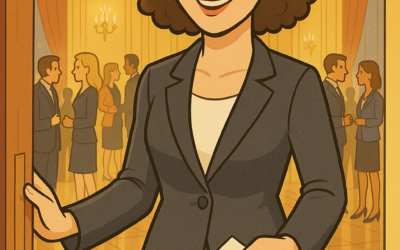The Power of Storytelling
in Your Presentations
Make the client the hero.
Your presentation isn’t just about showcasing your design genius it’s about inviting the client into their own success story. When they can see themselves living in the space you’re describing, you’ve already won them over emotionally before the budget even hits the table.
Use narrative arcs
Every great design presentation follows a rhythm: a beginning (the problem), a middle (the process), and an end (the transformation). Framing your work this way turns a list of specifications into a journey. Clients remember the story of how their workspace evolved far more vividly than they remember square footage or fabric codes.
Tie design details to human emotion.
Color, texture, and light aren’t just technical elements; they’re emotional cues. When you explain that soft blues calm a reception area or warm lighting makes a café more welcoming, you’re speaking the language of feeling, not just functioning. That’s what turns design into experience.
When you weave story, structure, and emotion together, you’re not merely presenting a design—you’re shaping perception. As Plato said, “Those who tell the stories rule the world.” In our world of design, those who tell the right story rule the room.
Alzheimers Walk
Walked Hudson River Bridge to End Alzheimers
The Designer’s Advantage – Speaking with Pictures and Plans
Behind every great design is a story: a spark of inspiration, a client’s dream, a challenge overcome.
Conflict Resolution Starts with Conversation
In design and in business conflict is inevitable. Whether it’s a client who changes direction mid-project or a team member who misses a deadline, tensions can rise fast. But most conflicts don’t come from bad intentions; they come from miscommunication. The good news? Strong communication skills can turn potential clashes into opportunities for collaboration and clarity.
Motivating Your Team Through Powerful Words
Design leadership isn’t just about making creative choices—it’s about motivating the people who bring those choices to life. The right words can turn a project into a movement.
Organizing a Speech Like You Organize a Space: Function Meets Flow
“Design is intelligence made visible.” – Alina Wheeler Designers know that great spaces aren’t accidents; they’re carefully planned for flow, balance, and purpose. The same rule applies to speeches: when your structure works, your message shines. ...
Know your Audience: Tailoring Presentations
Whether you’re pitching to a client, a builder, or a board, one size never fits all. The secret to a powerful presentation lies in knowing exactly who’s in the room—and speaking their language.








That makes a lot of sense! Stopping by from the UBC.
A good story can do alot of selling.